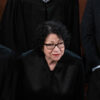My recent post explained why President Obama’s newly proposed $447 billion spending package aimed at boosting total demand is doomed to fail. Some commenters offered a challenge to that assertion.
The basis for assessing the spending package: Economic growth is determined by the supply side of the economy, beginning with productivity and labor supply. Recessions result from an external shock (for example, rapidly rising oil prices) combined with a structural distortion produced by a significant public policy (for example, encouraging rapid increases in home ownership by reducing loan requirements), that leaves production below full capacity. In other words, the natural state of the economy is one of growth, and recessions are only inevitable insofar as external shocks are beyond control and public policy is left at the mercy of human error.
But it is production that drives economic growth and creates with it an equal flow of demand. Successfully growing an economy, then, requires targeting production, not aggregate demand. The President’s plan addresses the wrong problem.
This comment challenged these basics:
You leave too much unaddressed here. Your example of “the supply of a farmer’s crops constitutes his ability to demand an automaker’s automobile” is true if we operate in a barter economy. Once you introduce money into an economy, all of a sudden you can have supply and demand for something that isn’t a good or service—money. If everyone, in the aggregate, decides to demand more money, then everyone must therefore be choosing to demand less goods and services. And if everyone chooses to demand less goods and services (and more money), then whatever is produced (supply) is greater than what is consumed (demand); hence, supply does not create its own demand.
There are a couple points to take away from this comment. First, if it’s true that people demand to hold more money, then “money demand” can be addressed through monetary policy, which controls the money supply. By increasing the money supply, however, there could be risk of stoking inflation, which would increase money demand as people seek to hold more cash in the face of rising prices.
How the President’s plan could affect the money supply. On one hand, President Obama’s new spending proposal would not alter the money supply, since it would be financed by borrowing money from the private economy (and would later be “repaid” by increasing taxes). On the other hand, the President’s plan risks stoking inflation and increasing the demand for money. Even though the money supply would be left unchanged, if people expect prices to rise because of unrestrained government spending, these expectations could make inflation a reality. Businesses could raise prices expecting wages (labor costs) to rise. Again, this would result in people demanding to hold more cash. So not only would the President’s plan leave unaddressed any money demand problem that may exist, but it could actually make money demand worse.
Production still drives the economy. Money demand does not change the fact that production ultimately drives supply and demand. When people demand to hold more money, it means money velocity (the speed at which a given dollar changes hands through economic transactions) slows. But it doesn’t change the fact that whatever is produced at a given time will be applied as demand somewhere in the economy.
Here’s why: Any dollar of income an individual produces gives that individual the choice of either spending that dollar on a good or service, or saving that dollar by putting it in the bank. Either choice affects economic output equally. Spending the dollar contributes to gross domestic product (GDP). Saving the dollar allows the bank to loan it to someone else to spend—also contributing to GDP. When people are hesitant to spend and banks hesitant to loan and thus total savings increase, banks invest savings in T-bonds to earn interest. This channels savings toward someone who will spend them on goods or services, again equally contributing to GDP.
In sum, the Federal Reserve, through monetary policy, has the tools to deal with problems relating to money demand. This is unrelated to and does not negate the fact that production creates demand and determines economic output. Short-term economic fluctuations are therefore caused by shocks to productivity, resulting from external factors combined with major public policy errors. The President’s stimulus plan targets the superficial problem of depressed aggregate demand rather than the fundamental problem of lower productivity, and therefore it will not stimulate economic growth.

























